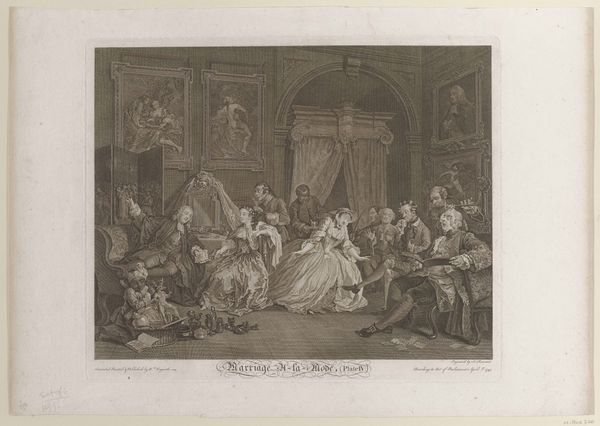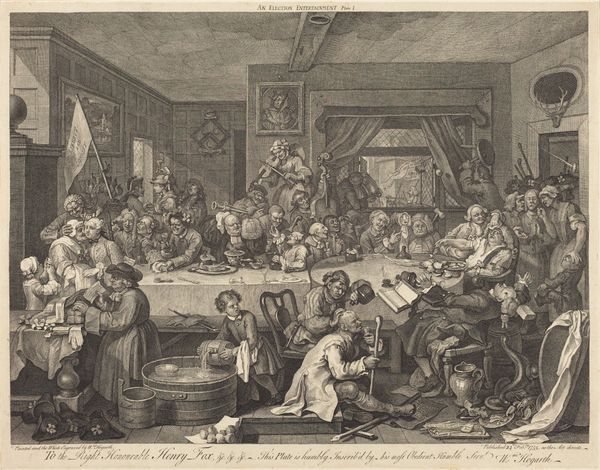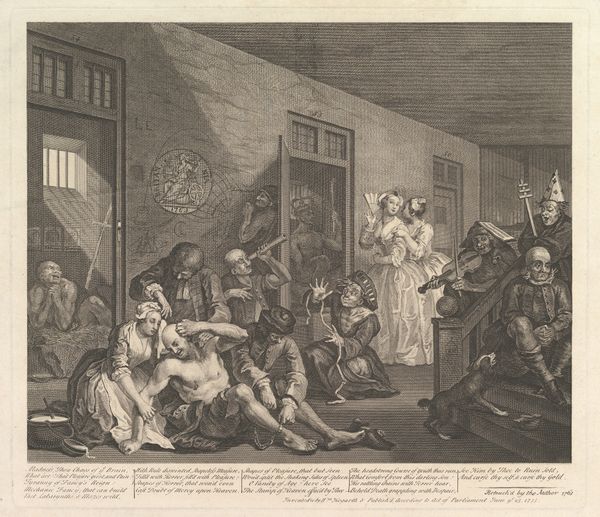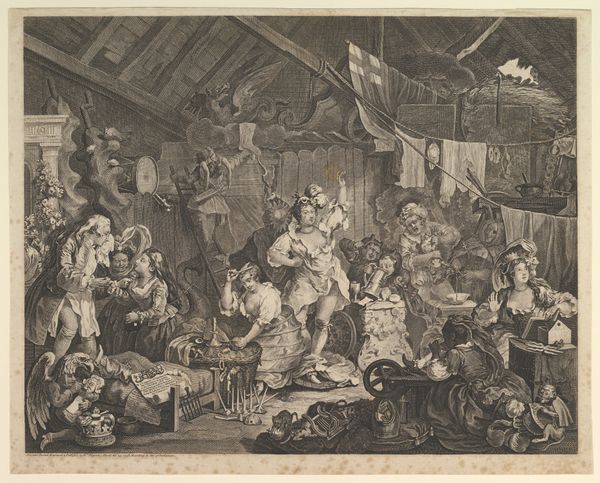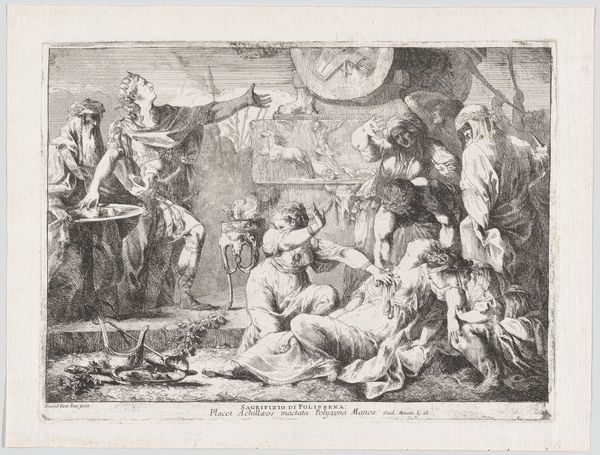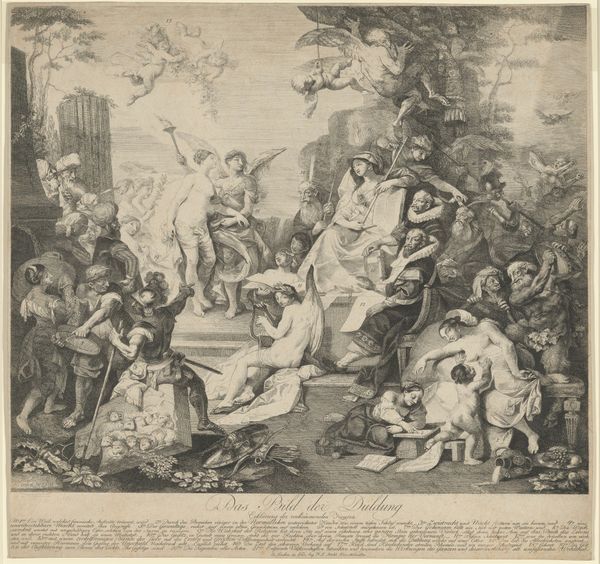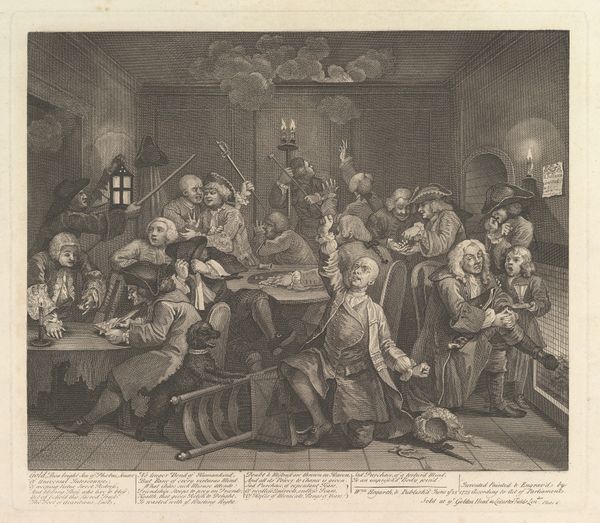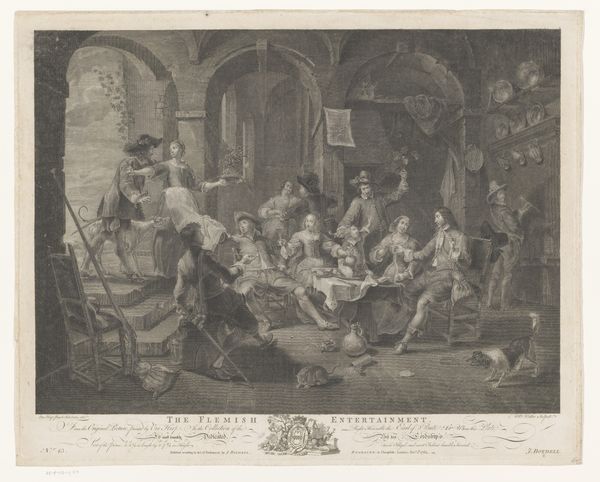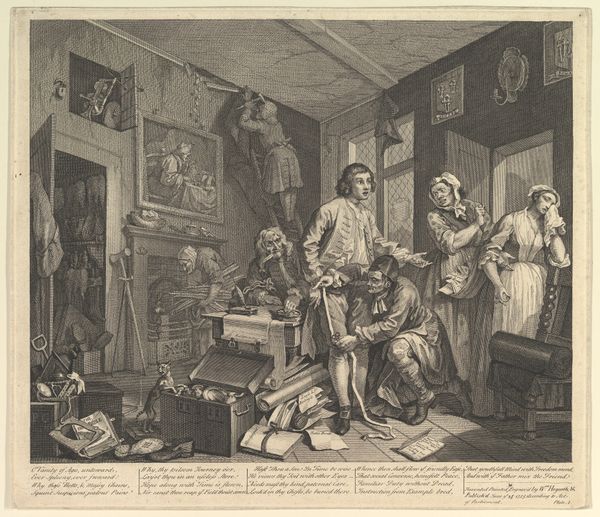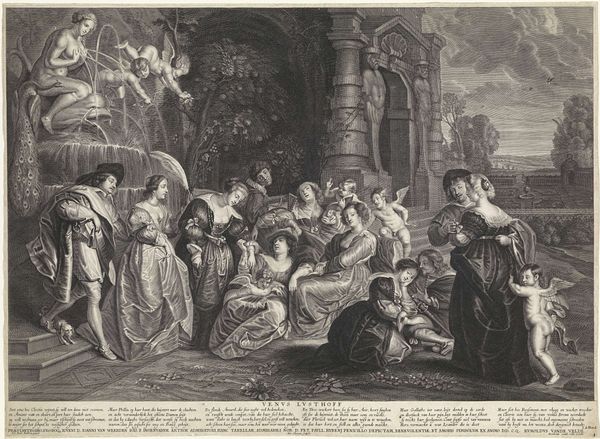
drawing, print, etching, oil-paint, engraving
#
portrait
#
drawing
#
narrative-art
#
baroque
# print
#
etching
#
modern-moral-subject
#
caricature
#
oil-paint
#
figuration
#
men
#
line
#
genre-painting
#
history-painting
#
engraving
Dimensions: plate: 14 x 16 1/8 in. (35.5 x 40.9 cm) sheet: 14 1/8 x 16 1/4 in. (35.9 x 41.2 cm)
Copyright: Public Domain
This print by William Hogarth, dating to around 1735, is made using engraving, a process of incising lines into a metal plate which then holds ink for printing. Hogarth was a master of this technique. The fine, precise lines allow for incredible detail, which he uses to deliver a moral tale of excess. Look at how he uses line to depict a chaotic scene of gambling and debauchery, a consequence of the protagonist's lavish spending. Each scratch and mark on the plate contributes to the overall composition, guiding our eye through the narrative. Engraving was a commercial medium, allowing Hogarth to reach a wide audience with his social commentary. The crisp, repeatable nature of the print emphasizes the mass production of images, mirroring the mass consumption he critiques. In essence, Hogarth’s choice of material and process amplifies his message about the pitfalls of capitalist society. This artwork reminds us that the means of production are never neutral; they always contribute to the story being told.
Comments
No comments
Be the first to comment and join the conversation on the ultimate creative platform.


